Discover the allure of mid-century modern aesthetics through a fresh lens. This article delves into innovative ways to infuse the timeless elegance of mid-century design into contemporary living spaces. Explore how classic elements blend with modern trends to create living rooms that are both nostalgic and forward-looking.
Blending Vintage with Contemporary in Living Room Designs
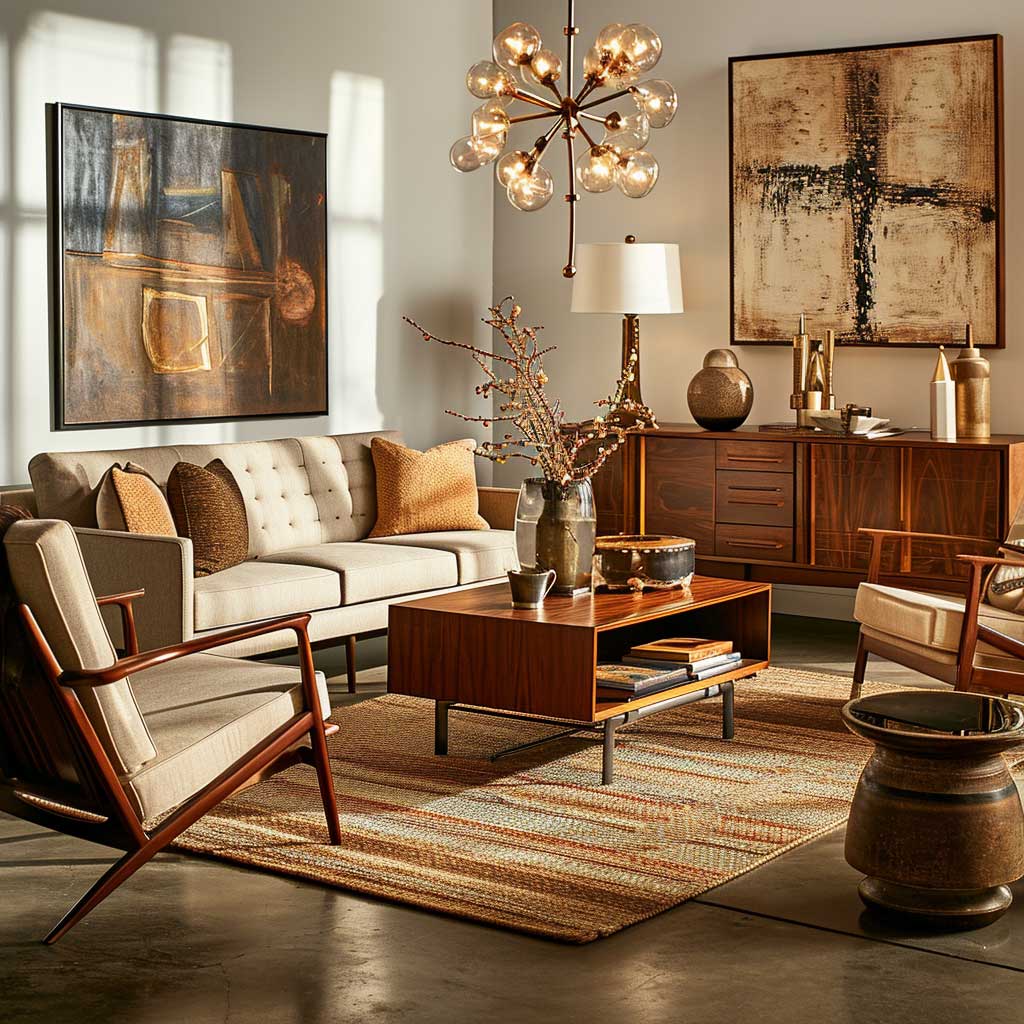
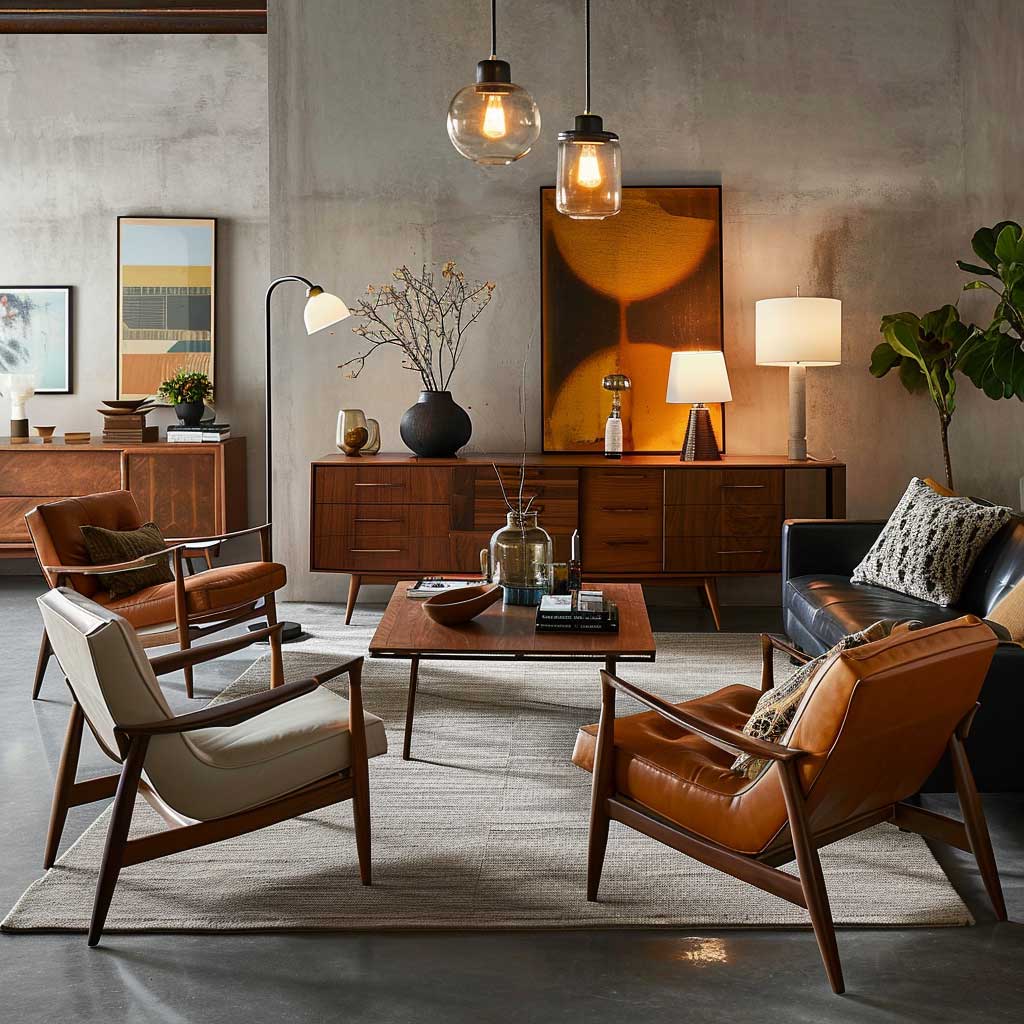

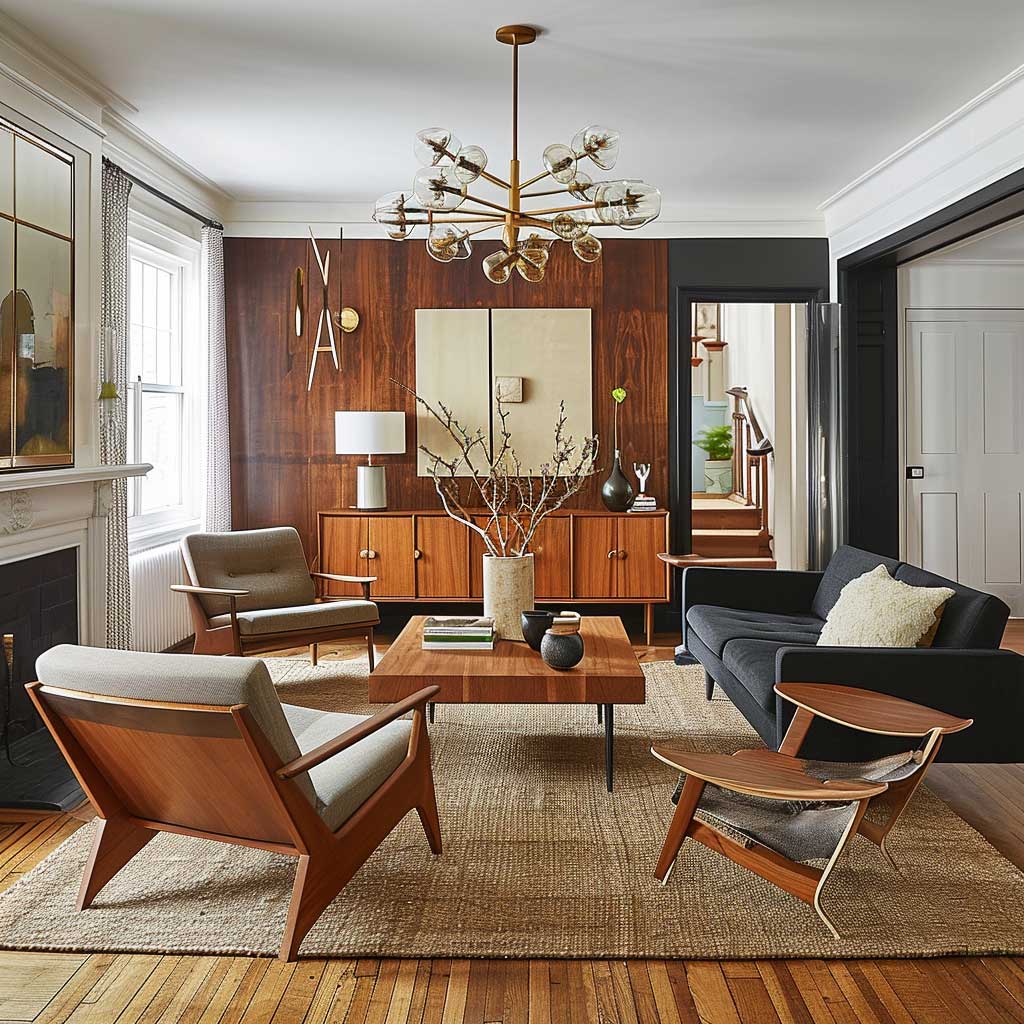
The allure of mid-century modern design lies in its ability to transcend time, seamlessly merging with contemporary elements to create a living space that is both nostalgic and avant-garde. This design philosophy emphasizes a balanced integration of vintage mid-century furniture with modern design nuances. The result is a harmonious blend of old and new, a testament to the timeless appeal of mid-century aesthetics.
At the heart of this approach is the selection of furniture. Vintage pieces from the mid-20th century are known for their clean lines, organic shapes, and understated elegance. When placed in a contemporary setting, these pieces don’t just fit; they stand out, bringing a sense of history and character to the room. The key is to choose items that have a story, pieces that have stood the test of time and yet feel as relevant today as they did decades ago.
The integration of these pieces with modern design elements is where the magic happens. Contemporary design trends often favor minimalism and functionality, aspects that are in perfect harmony with mid-century principles. Modern metallic accents, for instance, can provide a striking contrast to the warm wood tones of vintage furniture. This juxtaposition creates a dynamic interplay between different eras, fostering a space that is both intriguing and cohesive.
Color plays a crucial role in this blend. Mid-century modern design is renowned for its bold use of color, which can be effectively combined with the more subdued and neutral palette of contemporary design. Accent colors can be introduced through accessories such as cushions, rugs, and artwork. These splashes of color enliven the space without overwhelming the subtle elegance of the vintage pieces.
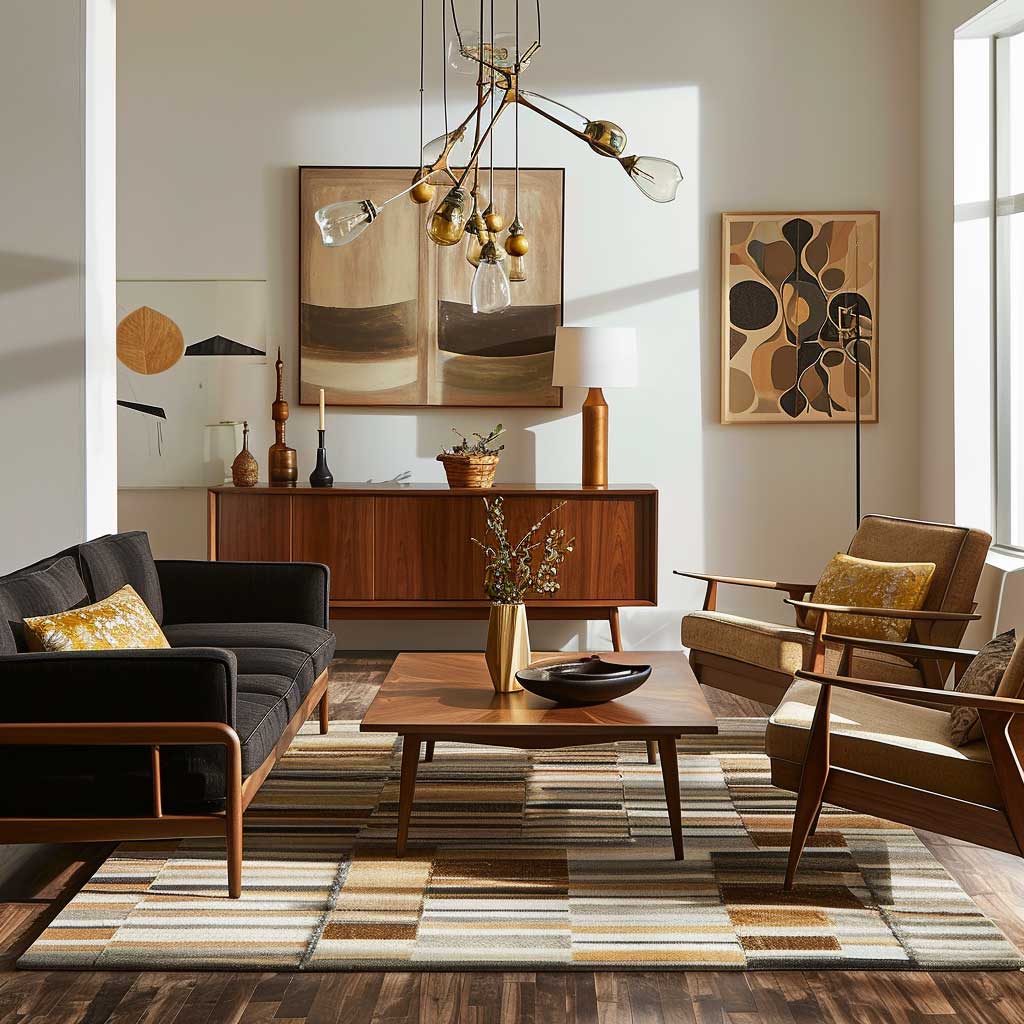


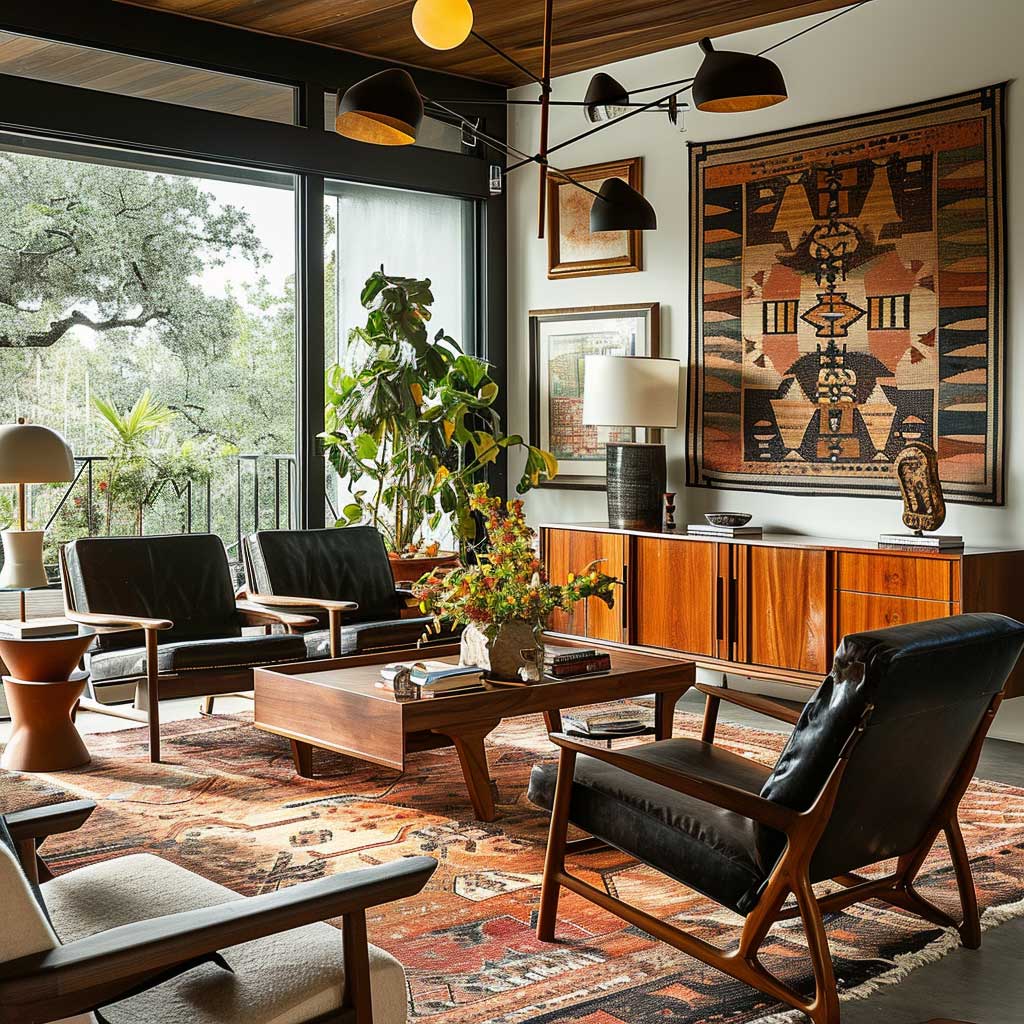
Lighting is another crucial element. The right lighting can enhance the features of mid-century furniture, highlighting its unique design characteristics. Contemporary lighting fixtures, with their sleek lines and modern materials, can serve as focal points in the room, drawing attention to specific areas or pieces of furniture.
Texture and fabric are also important. The use of different materials can add depth and interest to the living room. Vintage textiles, with their unique patterns and textures, can be complemented by the smooth, clean finishes of modern materials. This contrast in textures adds a tactile dimension to the space, making it more inviting and comfortable.
In addition to furniture and decor, the layout of the room is essential in creating a balanced look. The mid-century design emphasizes functionality and the efficient use of space. Modern living rooms often follow similar principles, focusing on creating open, airy spaces. By arranging furniture in a way that maximizes space and promotes easy movement, the room becomes more livable and adaptable to contemporary lifestyles.
The blending of vintage mid-century and contemporary elements in living room designs is more than just a stylistic choice; it’s a reflection of a broader cultural appreciation for designs that transcend their time. It’s about creating a space that honors the past while embracing the future, a living room that is as comfortable and functional as it is aesthetically pleasing.
In conclusion, the fusion of vintage mid-century and contemporary design elements offers a unique opportunity to create living rooms that are rich in history and style. This approach allows for a personalized space that reflects individual tastes while staying true to the timeless principles of good design. It’s a celebration of the best of both worlds, where the charm of the past meets the simplicity and functionality of the present.
Bright and Airy Mid Century Modern Living Spaces




The essence of mid-century modern design is its ability to create environments that are both aesthetically pleasing and functionally practical. This design approach becomes particularly captivating when applied to creating bright and airy living spaces. The emphasis is on minimalist furniture, ample natural light, and a thoughtful color palette, all of which combine to create living rooms that feel open, inviting, and timelessly stylish.
Natural light is the cornerstone of this design philosophy. Large windows that allow sunlight to flood the room are a hallmark of mid-century architecture. They not only brighten the space but also help to blur the boundaries between indoors and outdoors. This abundance of light enhances the colors and textures in the room, making the space feel larger and more welcoming.
The choice of furniture plays a significant role in achieving this bright and airy feel. Mid-century modern furniture is known for its clean, simple lines and lack of unnecessary detail. This minimalism is crucial in preventing the space from feeling cluttered. Low-profile sofas, sleek chairs, and functional coffee tables, often in neutral colors, serve as the foundational pieces. The furniture is not just there to fill the space; it’s designed to enhance it, promoting a sense of openness and flow.
Color is another vital element. While mid-century modern design often features vibrant colors, in bright and airy living rooms, the color scheme tends to be more subdued. Neutral walls serve as a blank canvas, against which pops of color can be introduced through accessories and artwork. This strategy allows for flexibility and personalization, enabling homeowners to add their unique touch to the space.




Texture and pattern play supporting roles in these living spaces. While the overall feel is minimalist, the use of different textures can add depth and interest. A shag rug, a leather armchair, or a velvet cushion can introduce tactile variety without overwhelming the room. Patterns, when used sparingly, can add visual interest. Geometric prints, a nod to the era’s love for bold designs, can be incorporated through throw pillows or wall art.
Layout is key in creating a space that feels both open and intimate. Mid-century modern design is all about functionality and the efficient use of space. Furniture should be arranged in a way that promotes easy movement and interaction, with a focus on comfort and practicality. This might mean opting for a modular sofa that can be reconfigured as needed, or placing chairs in a way that encourages conversation.
In creating bright and airy mid-century modern living rooms, the goal is to achieve a balance between form and function. It’s about designing a space that’s not only beautiful to look at but also comfortable to live in. The use of light, color, texture, and thoughtful layout all contribute to this goal, creating a living room that’s both a nod to the past and a reflection of contemporary living.
In summary, bright and airy mid-century modern living spaces are a testament to the enduring appeal of this design style. They showcase how the principles of mid-century modern design – simplicity, functionality, and a connection with nature – can be applied to create living spaces that are relevant and appealing in today’s world. It’s a design approach that celebrates light, embraces minimalism, and creates spaces that are both stylish and livable.
Innovative Use of Textures and Patterns in Mid Century Decor




Mid-century modern design is celebrated for its ability to seamlessly integrate various elements into a cohesive and aesthetically pleasing whole. Among these elements, the innovative use of textures and patterns stands out as a defining characteristic of this style. In living rooms, this approach translates into a dynamic and inviting space, where each element contributes to an overall sense of harmony and balance.
Texture plays a fundamental role in mid-century modern interiors. This design style often juxtaposes different materials to create a layered and interesting look. For instance, the smooth and sleek surface of a mid-century coffee table can be contrasted with a plush, velvet sofa or a shag rug. This interplay of textures adds depth to the room, making it more engaging and tactile. It’s not just about how the space looks, but also how it feels.
Patterns are equally important in this design approach. Mid-century modern is known for its bold and often geometric patterns. These can be incorporated in various ways – from wall coverings to upholstery fabrics. The key is to use patterns in a way that complements, rather than overwhelms, the space. This could mean opting for a geometric rug to anchor the room or adding patterned cushions to a solid-color sofa. The use of patterns is a nod to the era’s love for innovation and creativity.
Furniture selection is crucial in executing this approach. Mid-century pieces are known for their clean lines and organic shapes, which provide the perfect backdrop for experimenting with textures and patterns. A wooden sideboard with a smooth finish can be paired with a textured lamp or a patterned vase, creating a focal point in the room. Similarly, a sleek armchair with a patterned throw can add visual interest and comfort.

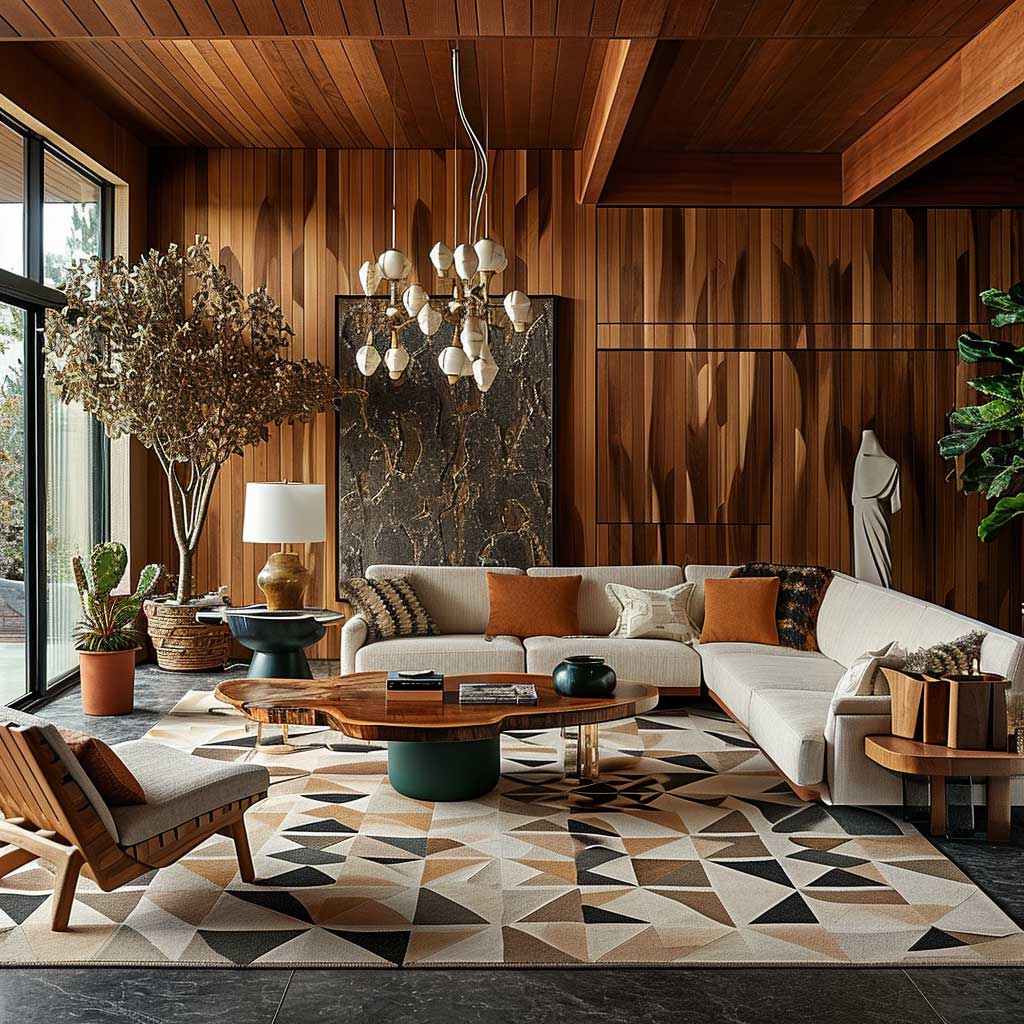


The color palette of the room plays a supportive role in this textural and patterned narrative. Neutral and earthy tones are often favored in mid-century modern design, as they provide a calm and understated background. Against this backdrop, textures and patterns can stand out, making their presence felt without overpowering the room. The use of color should be strategic, accentuating the different textures and patterns without causing visual clutter.
Lighting is another aspect that can enhance the impact of textures and patterns. The right lighting can highlight the different surfaces and materials in the room, accentuating their unique qualities. Table lamps, floor lamps, and ceiling fixtures in mid-century styles can not only provide functional lighting but also serve as decorative elements that complement the room’s overall design.
Finally, the arrangement of these elements is key to creating a balanced and harmonious space. The goal is to achieve a look that is eclectic yet cohesive. This might involve mixing and matching different textures and patterns, experimenting with scale and proportion, and carefully considering the placement of each piece. The aim is to create a living room that is visually stimulating and inviting, a space that reflects the homeowner’s personal style while staying true to the principles of mid-century modern design.
In summary, the innovative use of textures and patterns is a hallmark of mid-century modern decor, particularly in living rooms. This approach allows for a creative and personalized space that is both aesthetically pleasing and comfortable. By skillfully combining different textures and patterns, and balancing them with the right furniture, color scheme, and lighting, one can create a living room that is a true reflection of mid-century modern elegance and innovation.
Embark on a journey back in time with a modern twist. These mid-century modern living room ideas are more than just a nod to the past; they are a redefinition of timeless style, blending classic design with contemporary comforts. Whether it’s through bold color schemes, innovative use of space, or a mix of old and new elements, these ideas are sure to inspire and transform any living space into a stylish, welcoming haven.












